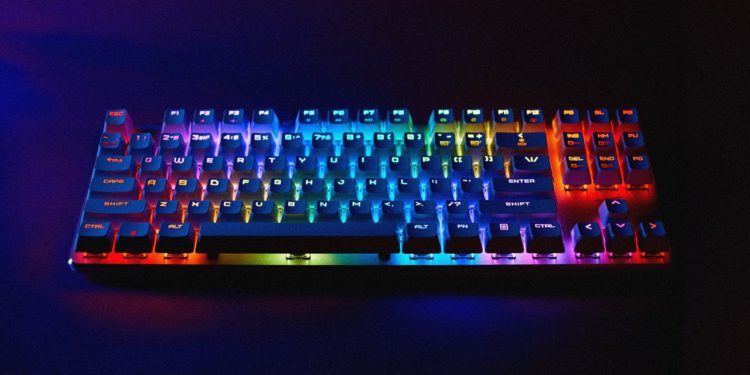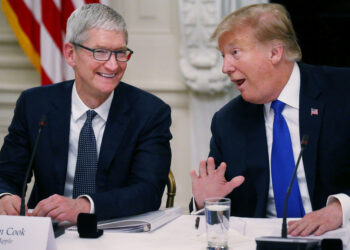By WIRED
A full-size keyboard has a layout with everything you’d ever need, and usually quite a few keys you don’t too. The full-size keyboard is the most well-known keyboard layout, and also one of the largest, consisting of a main cluster of letters and numbers, a separate row for function keys (F1 through F12), separate arrow keys and extras, and a number pad. This layout is best if you have a lot of desk space to spare and want something familiar.
A 96 percent keyboard is a small step down from a traditional full-size. Also called “1800,” the 96 percent layout maintains almost every key while removing a good amount of dead space. Named after the Cherry G80-1800, this layout moves the number pad closer to the alphanumeric keys, pushes the arrow keys down a bit, and moves some of the extra keys into the space above the number pad, making a great compromise for users who need a number pad but don’t love the massive horizontal footprint of a traditional full-size.
A TKL keyboard is a great compromise between the practicality of a larger board and the compactness of a smaller one, maintaining everything most users need while cutting the numpad out of the equation. The TKL name refers to the board being “ten-key-less,” referring to the removal of the 10-key number pad compared to a full-size layout. In the modern “premium” keyboard space, there are also FRL (function-row-less) TKL keyboards, where the top row of F1–F12 are cut off to save even more space
A 75 percent keyboard cuts things down even further, and is a fairly recent layout to enter the mainstream. This does the same to a TKL as the 1800 does to a full-size keyboard, compressing the arrow keys into the side and moving around all the other keys to save some space. Some of the most recent 75 percent keyboards include Razer’s BlackWidow v4 75% and the Mode Sonnet.
A 65 percent keyboard takes a bit off the top of the 75 percent, removing the top function row in exchange for a function layer over the main number row. These keyboards are fairly popular among gamers for their compact, portable design, plus the arrow keys are still present for specific games.
A 60 percent keyboard is the smallest mainstream layout, removing the alphanumeric keys from the rest of the keyboard and transplanting them into an incredibly compact form factor. This layout is great for people who want to save space, but it will require some familiarity with function layers, since the F-row, arrow keys, and quite a few other multimedia controls don’t have dedicated keys. While there are quite a few different variations of the 60 percent layout, the two most common are the traditional ANSI layout, reminiscent of gaming keyboards like the POK3R or the compact keyboard found on a laptop, and the niche-but-beloved HHKB layout.
A 40 percent keyboard removes the number keys and a few other modifier keys. This layout will usually rely on multiple function layers to cover all the necessary functions, and it allows for efficient typing without having to move your hands around much.
The Sound of a Keyboard
For many people, the sound of a keyboard is one of the most important aspects when shopping for one. Usually, keyboards are described as being either “clacky” or “thocky.” These two phases are typically used to denote that a keyboard sounds nice in specific, somewhat oppositional ways.
A “thocky” keyboard will have a deeper and more rounded typing sound that usually comes from using an FR4 (flame retardant fiberglass) or polycarbonate plate, along with PBT keycaps, while a “clacky” keyboard will have a higher-pitched, sharper typing sound, and will typically come from using aluminum, brass, or carbon fiber in the plate and case, along with ABS keycaps.







Discussion about this post